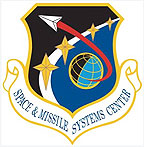 The Space and Missile Systems Center (SMC) Remote Sensing Systems Directorate (RS) is bringing innovative space capabilities to the warfighter, the American people, and its allies by embracing rapid and innovative space acquisitions.
The Space and Missile Systems Center (SMC) Remote Sensing Systems Directorate (RS) is bringing innovative space capabilities to the warfighter, the American people, and its allies by embracing rapid and innovative space acquisitions.
In recent months, SMC underwent a structural acquisition transformation dubbed SMC 2.0 that implemented efforts to enhance collaboration and decision-making, optimize resource allocation and alignment, and develop a more innovative workforce under a new enterprise architecture.
With its Ground and Data Exploitation Team, RS is embracing SMC 2.0 by implementing Agile program management methodology in its Future Operationally Resilient Ground Evolution (FORGE) program. FORGE is the ground system for Next Generation OPIR satellites, which will provide strategic survivable space-based missile warning and delivers improved core missile warning capabilities that are more resilient against emerging threats.
What is key to the successful implementation of any Agile methodology is training and coaching. The FORGE team began their Agile journey with extensive training delivered by Stellar Solutions in August of 2018 intended to baseline the team’s existing knowledge of processes and terminology. The actual implementation of Agile project management for FORGE began last January with robust coaching assistance from Stellar Solutions, who’s highly experienced coaching staff worked daily with the project teams to guide them through the Agile processes and assist management to set up the necessary oversight and guidance.
Implementing a somewhat new approach within government, the FORGE team is taking a Portfolio Management approach which includes software developers, acquisition agents, and end users. The portfolio construct takes into account all resources needed to successfully execute a program including personnel, funding, and time, and draws linkages between them. Then, progress is tracked in an iterative fashion. This approach allows management to see potential stumbling blocks early on and take appropriate action.
Colonel Tony Meeks, RS deputy director, knows that transitioning to a more Agile program management to improve how SMC delivers resilient, war-winning space capabilities faster will be the new standard across space acquisition. He and his team are working hard to ensure that FORGE can provide the best possible solutions for the future of Next Gen OPIR satellites for the future and beyond. He said that agile techniques are well suited to the FORGE program’s modernization activities. These activities are incrementally transitioning existing and Next Generation OPIR ground capabilities onto the Enterprise Ground Service (EGS) architecture. This will provide a suite of common Command and Control (C2) ground services for use by all Air Force space systems. He noted that the simple reality is that adjustments havae to be made as to how we build space systems. The FORGE team has embraced the SMC 2.0 goals of implementing an enterprise approach to space acquisitions and delivering capabilities faster. What they accomplish here will serve as the model for data processing for every single mission supported across SMC and represents the future of space acquisitions. The concept of agile acquisition is central to SMC 2.0’s vision of delivering innovative, war-winning capabilities. It will require a culture change at all levels of Air Force space, from the SMC systems engineering process all the way through the training paths. Space Operators are training with these new incremental capabilities. The FORGE team is embracing this culture change in all aspects of the FORGE program.
Lieutenant Colonel Kellie Brownlee, FORGE team lead, said the main benefit of Agile acquisitions is having the flexibility to pivot and address changes as they arise, rather than discovering issues at the end of the project lifecycle. This flexibility reduces the chance of large-scale failure and helps deliver capabilities on-time and on-budget. As a result of Agile integration, the team is making good progress toward executing the top three priorities; Mission Data Processing, C2 migration to EGS, and delivering Relay Ground Stations that meet the needs of the next generation sensors.

